|
I believe the main reason I am into antique cars is because I grew up with a Porsche 356. For most of my life it sat in a garage or a barn and then in the 1980s my father brought it home and we worked on it a bit at a time. Dad bought the car for $500 in 1966 after driving a newer one. Below is a shot of him with the car around 1971. The car is battered but is all matching numbers including the original engine. When my parents moved from Illinois back to our home state of Massachusetts a few years back he sent the car to me. I asked why and he said he thought I would fix it if it was sitting in my garage. It took a few years but he was right. The first step was getting it running around the yard. Then it sat for a while longer. Dad came down to Maryland and taught me the leading and brazing techniques that were my first foray into metalwork on antique cars. And finally I really got rolling on the project with the help of former students. It was all worth it to see Dad with the car that I grew up hearing legends of. And with it all fixed up I heard even more stories that were new to me! One of my favorite stories is of a time he was pulled over for speeding. The trooper started yelling at my father and Dad was very confused because he was driving the speed limit. Well it turned out Dad had been speeding (120mph) an hour or two before and the trooper gave up chasing him! Why suddenly talk about the Porsche now when I mostly talk Jeeps? Well after a year of sitting I finally took a couple days for my Dad and I, fixed some electrical issues, and put the Porsche back on the road again. I feel guilty for not working on Jeeps for two days….. but it’s worth it to be able to call up my father and talk about the Porsche and having it on the road again. As Harry Pellow, Der Maestro, used to say, “Keep the 356 Faith!”
Back to Jeeps now, but I will drive the Porsche to the shop. Every now and then an opportunity comes along which you cannot ignore. And sometimes you think about the opportunity and wonder if you should be an intelligent human being and ignore it. Well, we took the opportunity just to say we did it. A customer dropped off a Jeep needing transmission work. I believe he was inspired by the photo below when he told us to flip it on its side if we wanted to. During WW2 if you had a bunch of fellows with nothing to do, and wanted easier access for a repair I guess this was an option. I have seen several other photos of mechanics tipping and flipping Jeeps for repairs. Since none of us are young (but we are obviously sometimes stupid) we used a Jeep and winch to bring this Willys MB up on its side. Once it was on its side we set about removing the offending transmission from beneath. There are several things one must think about when doing this. First is blocking the engine in place. With shims and wood cut to size we set up a “field expedient” set of blocks to keep the engine from falling out. Later we would strap it in place with heavy straps and a 6 by 6 piece of lumber. Here is Mike getting to work removing the transmission. Removing the transmission and transfer case gave us alot of time to think about the wisdom of what we were doing. If you had a group of young, healthy fellows you could perform the removal easily. However, installation would really not work this way. You would not have enough control when maneuvering the transmission back in place. At that point we strapped the engine in and decided to lower the Jeep back down. But not before taking some great vintage pictures. Below is a photo of myself after removing the transmission. And here is a photo illustrating why we do not let Mike drive the Jeeps What did we learn from this? First off tipping the Jeep did NO damage to the body, I am impressed. I did make sure to drain all fluids and remove the battery before tippping. While as a field expedient this might make work on driveshafts and such easier, it is not a practical method for swapping a transmission. And I must emphasize, PLEASE DO NOT try this at home. We are professional idiots :) Stay tuned as I will be updating this post later with a video of lowering the Jeep
The question I have received the most as of late is where do I get my parts? Other than a secret underground bunker filled with NOS jeep parts (location to remain undisclosed) the list below is of the main suppliers I use and WHY I use them. Each supplier name is also a link to their website.
Beachwood Canvas: the best canvas products available in my opinion. And the ONLY people to go to for seats unless you want to be feeling metal under your butt. Army Jeep Parts: George Baxter knows what he is doing and his parts FIT RIGHT. If you want a correct spec radiator that will not overheat, go to him. If you want an amazing rebuilt transmission or transfer case, go to him. AJP carries electrical parts made by MV Spares in Australia which are all engineered to correct WW2 specifications. AJP also carries panels produced by Midwest Military. These are made in the USA to correct specifications unlike the MD Juan parts. George is amazingly knowledgeable and a perfectionist. Some folks want to save a few dollars and wrestle with the consequences. Save your time, buy from AJP. Walck’s 4 Wheel Drive: I use Walcks for rebuilt starters, generators, and such items as brakes and brake parts. They cover WW2 and up. A family business they are wonderful to deal with and provide reputable quality. I cannot say enough about them. D L Bensinger: On the east Coast if you need a gas tank, combat rims, handles etc.. go to Darryl. Ron Fitzpatrick Jeep Parts: On the west coast Fitzpatrick is an amazing parts supplier. Also use him for rebuilt transmissions, transfer cases etc.. Ron has everything. Sheet metal is MD Juan as far as I remember though. Also, if you are not on the g503 forum then follow the link to his site and join it. TM9 Ordnance: I have not tried them yet but fellow restorers who have say they are the best paint suppliers. Brent Mullins Jeep Parts: Brent makes rivets for your frame restorations. They look like original rivets from the top but actually are a type of bolt which breaks off on the bottom after the torque spec is reached. I use these on all frame restoration. In the end the best thing I can say is that it does cost money to restore a Jeep. Use the best parts and you will enjoy restoration, maintenance, and driving of your Jeep so much more. Have fun!! -Merlin I was always a VW Beetle guy. I grew up with my father’s 1956 Porsche sleeping in the garage and when it came time for my first car my father said that I should get a beetle. He said I would learn everything I needed to know about cars on a simple VW bug. So we set out with the $1500 I had saved and eventually found one for sale near our home in Hunt Valley, Maryland. I drove the bug for years, all through college and shortly past. I learned painting, engine swaps, electrical, all the basics. Except for how a radiator works. That came with my friend Scott Roberts. I met Scott through WW2 living history and he moved in next door to me in St. Mary’s county. With him came his WW2 Jeep that I loved. Scott would loan it to me and I would drive it around, sometimes taking it to the State Park that I worked at. My friend, Ray Black, was a WW2 reconnaissance veteran and he loved the Jeep. The first time Ray saw it he stood there with his hands on the hood and just talked about Jeeps for an hour or two. Eventually I moved to Baltimore, and Scott made me a great deal on his, now I call it “our” Jeep. Scott taught me 99% of what I know about these old fellas. The Jeep became known in Baltimore as the “Hanson Rescue Service” for being one of the only vehicles to make it out in some of our biggest snowstorms. The Jeep helped drive shovels rescuers to a steamtug in Baltimore in the huge snow of February, 2013. After that we were at the B and O museum just after the collapse of their roundhouse. Fast forward a few years and I had worked on a wide array of antique cars, but Beetles and Jeeps were my constant. When I switched from teaching in public to private schools I needed some more cash due to a paycut (worth it for my sanity!!). I was beginning to think of doing work on antique cars on the side. Near Christmas one year I was looking on ebay and saw a bright yellow WW2 Jeep for $500.00. It was close to my parents in Massachusetts so I bid, and won it for less then $600.00. I figured it would be a parts vehicle. I took my trailer to Massachusetts for Christmas and with an incoming blizzard my Dad and I set out and picked up the Jeep just in time. Towing it back from Massachusetts events began to unfold that set Hanson Mechanical in motion is a bigger venture than I ever meant it to be. I stopped in a rest stop outside of Scranton, PA and a woman saw the Jeep and said,”it’s a Willys!” Then she told me the often heard story of a friend who had passed away who had Jeeps and Jeep parts. I gave her my card and that is how we ended up dealing with and eventually buying out John Barton’s estate. (as well as republishing his book!!) The Jeep came home and in the spring a friend and I took a look at what to do with it. It had a 1952 Kaiser straight six in it. With a little puttering the engine purred to life. It was installed beautifully, the front cross member moved a bit forward to handle it. Someone had engineered the installation. The rest of the jeep was a bit of a mess though. I think I took around 20 pounds of bondo out of the tub and fenders. A friend of mine bought out a Jeep junkyard and soon I was making runs to Virginia to pick up frames, tubs, parts, and one very sad WW2 Jeep. As we started working on the yellow Jeep the farm next door to me offered me their six car shop in trade for mowing the lawn. Things just kept expanding. We took in a couple repair jobs on vintage vehicles and then a friend and customer referred the owners of the well known Jeep “Kilroy” to us for electrical work. By the end of a busy summer we finished the yellow Jeep, had repairs coming in, and already were spending time in John Barton’s old shop in New York state inventorying and bringing back tools, parts, and a Jeep. By that winter we had taken in a shipment of Jeeps from Oklahoma, and were building a GPW for a National Geographic TV show. Things basically snowballed. I tell people that God decided I was going to run a Jeep shop. Events happened at just the right time and place for everything to come together. God willing we will be around for years to come as I continue to improve my project and business management skills as well as restoration skills. Every one that we put back on and off the road is like bringing a piece of history to life for me. Thanks to everyone who has supported us, been patient with us, and are enjoying our stories and Jeeps!! (along with the occasional VW…I have to get back to my roots sometimes!) Drive those Jeeps!!
In December of 2011 Hanson Mechanical rebuilt a 1945 ford GPW for International Military Antiques of Gillette NJ. The rebuild, and use of the Jeep in a reenactment will be on their new TV show, Family Guns. Below is a shot of the director, myself, and two of the IMA fellows after filming at a WW2 reenactment in January. The episode featuring our Jeep rebuild was called “I want a Jeep.”
Last Saturday Scott Roberts and I met with Ernie Baals to salvage parts for the Hanson mechanical WC 27 project. Ernie’s place is a history of 1940s Dodge with vehicles tucked away in old garages, buildings, and hidden away in the trees. The car in the garage is a 1941 Plymouth Staff car. Most of the military accessories came from Mahalchik’s military scrapyard in New Jersey (Mahalchik’s article, Mahalchik’s Airfield with views of scrapyard) Many parts for my Willys MB came from there as well, back in the days when Scott Roberts owned it. The next vehicle we saw was a beautifully restored 1940 Dodge VC5. Ernie and his buddy, Troy, estimate that they have 2,500 to 3,000 hours in this restoration. There are only a handful of these trucks left. Many parts had to be carefully restored or altered to be correct for this Dodge. As we explored the buildings Ernie showed us this Wc 55/52. It had both German and Italian dataplates on it. This Dodge was quite well used after the war. Not only were there beautifully restored and maintained vehicles in garages, there were many others outside. Below are a couple of my favorites, an early Dodge being used as a plow truck, and a civilian Dodge Power Wagon. The Dodge below was converted into the ultimate tow truck decades ago. When the truck was moved to Ernie’s they had to cut down a tree growing through it. Ernie believes this truck was built off of a Dodge command car chassis. The cab interior was interesting with a dual set of gauges. the second set may be because the owners could not find replacements for the first set. Also there were many 1940s Plymouth sedan parts in the cab including a radio and dash console. While it may never see the road again, I would love to see this Dodge come roaring up to save a stranded vintage car or truck. Whoever owned this must have put a great deal of time into this conversion.
This is only a small sampling of the Dodges at Ernie’s. His collection reflects his and his father’s love of these vehicles. Ernie was a wonderful host, a font of knowledge and he provided great parts to help our WC 27 along. Soon I will post photos of the jeeps he has. I really believe there are right and wrong reasons to do a vehicle restoration. The first two P’s encompass the right reasons, the last one covers the wrong reasons. First and foremost a personal connection is a solid reason to do a restoration. One customer of mine has his grandmother’s VW beetle, another has us working on his uncle’s CJ2A. Even more have memories of their grandparents talking about Jeeps, or having an old WW2 Jeep on the farm. Some even remember driving a Jeep during the war. I grew up with my father’s 1956 Porsche always in the garage waiting for us to work on it. In 2010 I finally was able to bring it back to life with some of my former students. Dad always told stories of that car so for me this was a very personal connection. Seeing him with it in one piece again meant everything to me. He also spoke alot about his Bultaco motorcycle. He sold it to buy the Porsche. When I stumbled into a Bultaco I grabbed it. Once again seeing him ride off on the Bultaco was an amazing personal experience for me and I think him. Dad had not seen another Bultaco since he sold his in 1966. If you have a personal connection to a vehicle then the price, pain, blood sweat and tears of a restoration is all worth it. A personal connection is in my opinion the best driving reason for a restoration of a vintage vehicle. Passion is the next best reason. If you have a deep passion for something then you will see through a project to bring it to life. Whether it be a tractor, a Jeep or any other vehicle. WW2 attracts a huge amount of interest. People become very passionate about the war. Their connection to that history comes through collecting artifacts, and for many the ultimate is to own and drive a WW2 Jeep. When I sense someone has a real passion I want to work with them just as much as with someone who has a personal connection. People are also just plain passionate about Jeeps. Something about Jeeps and VW Beetles inspires a wonderful following of people who care for, drive and pass on their love of these vehicles to their families. If you have a deep passion for a vehicle it will guide you through a restoration. Profit is a major reason NOT to do a restoration. I am going to bunch a few things under here too. I will include in this the strange belief that restoring a vehicle will be a much cheaper way to obtain the vehicle you want. That does not work…. Unless you are Scott Roberts, the man is a genius with vehicles. The cost of restoring a vehicle is usually far above the cost of just going out and buying a restored version of the same vehicle. The parts involved in a WW2 Jeep can make restoring one on your own cost more than just buying a restored one outright. I have seen people even try to save money by buying rusty battered versions of the parts they need in hopes that this will save them money. That does not work at all. And unless you really know what you are doing and have alot of spare time, restoring a vehicle to re-sell is not going to work either. If you can do all the mechanical work, welding, painting etc.. then you may be fine. If you cannot then it just is not going to work out for you. You will end up trying to sell for $30,000 a vehicle worth $9,500. Here is the key: Just because you put money into a vehicle does not make it worth what you put in! There are alot of people smoking crack out there trying to sell late WW2 Jeeps that might bring $16,000 for over $30,000. All I can think is that in their drug addled haze they maybe hallucinated the value they came up with. (I assume they took to drugs after their wife threw them out of the house when she saw the restoration bills.) And yes the Jeep in these pictures was from someone involved in the third P of this lecture.
So to review: Personal connection = Good Passion for the vehicle = Good Profit/ saving money = Baaaaad (don’t do it!!) If you are in it for the right reasons, then enjoy the trip, the experience of restoration and the end results are very rewarding. For several years I was the librarian at a public high school. We had an older retired fellow, named Dave, who volunteered in our Science classes. He would come to the library and we would chat. Dave owned a Willys MB in the 1970s and 80s so we found alot to talk about. He gave me many of his books and one day brought in a bunch of WW2 Army vehicle training filmstrips. I went through them and found one for haltracks, and of course one for Jeeps!! I do not remember what was on the others. One of the computer graphics students took the Jeep filmstrip and scanned it in for me, then made an archive of it. There are some wonderful detail shots. I am particularly fond of the one with all the tools laid out. And there are mechanical details as well. If you want to see more of these just follow this link to my website: Jeep training I realized that the archive is buried and many folks may not have seen it. Included below are a last couple of samples for your enjoyment. Notice the large star on the side, I do not see many restored Jeeps with the star located there.
|
AuthorMerlin Hanson Archives
January 2018
Categories |

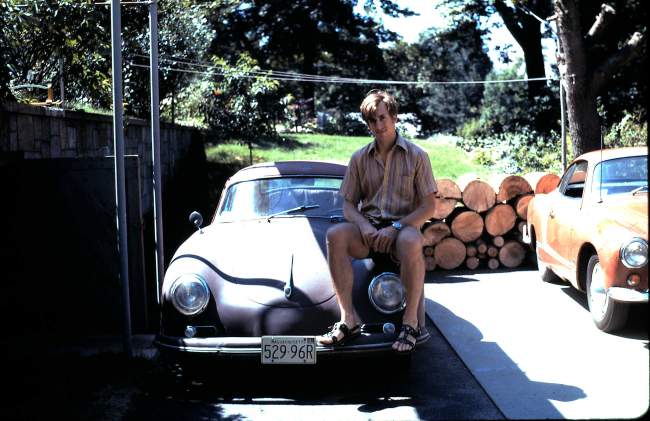









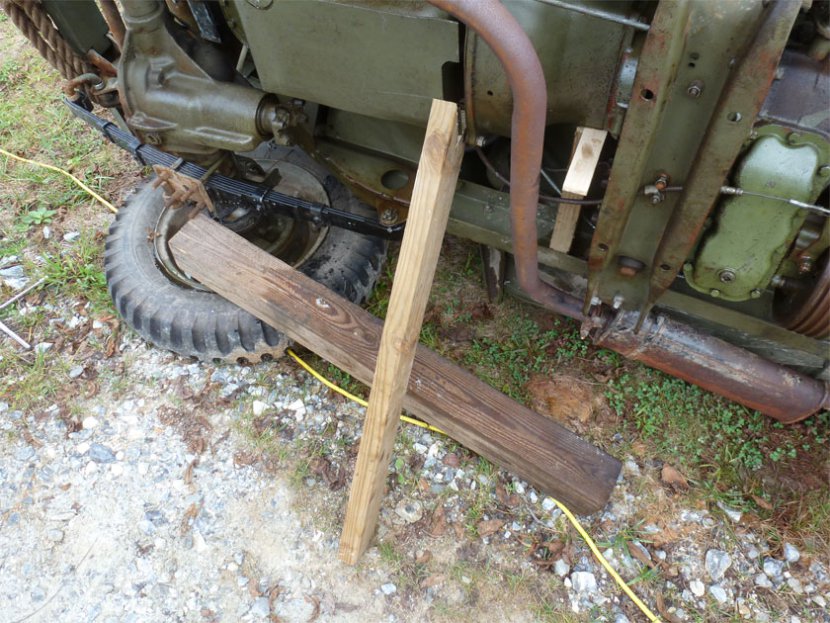






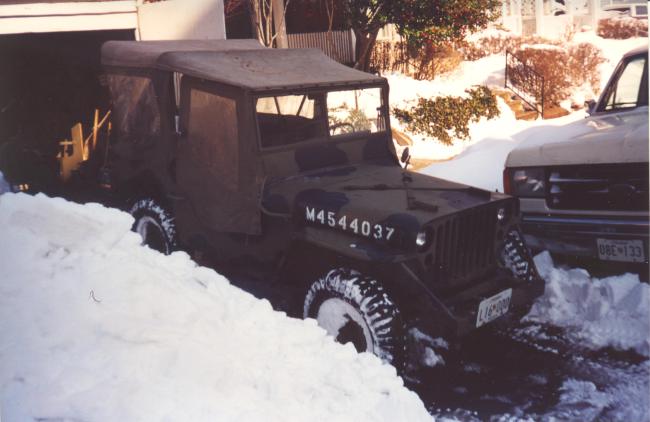
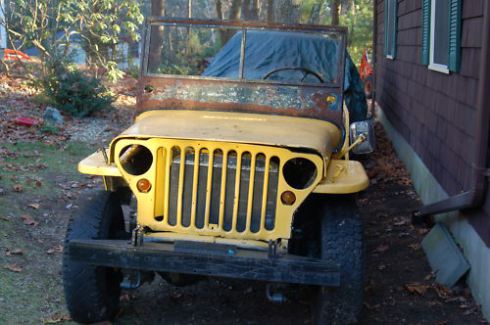







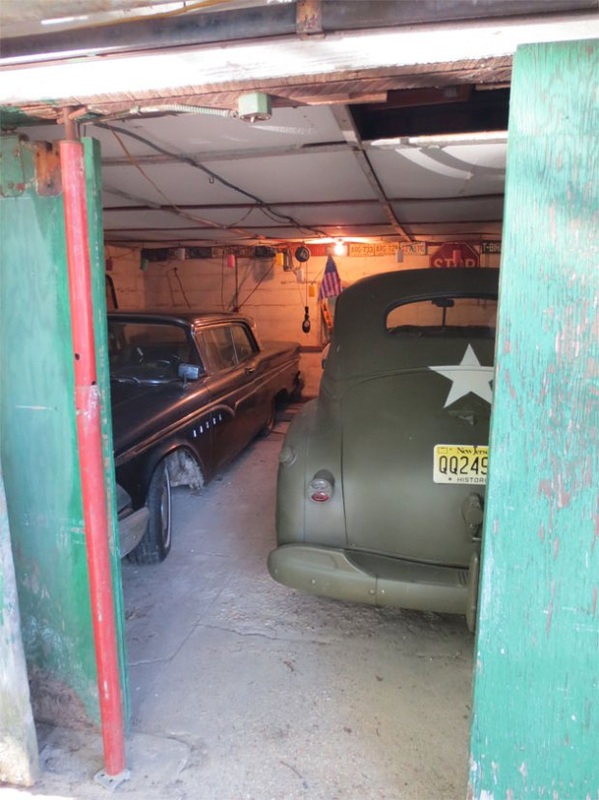
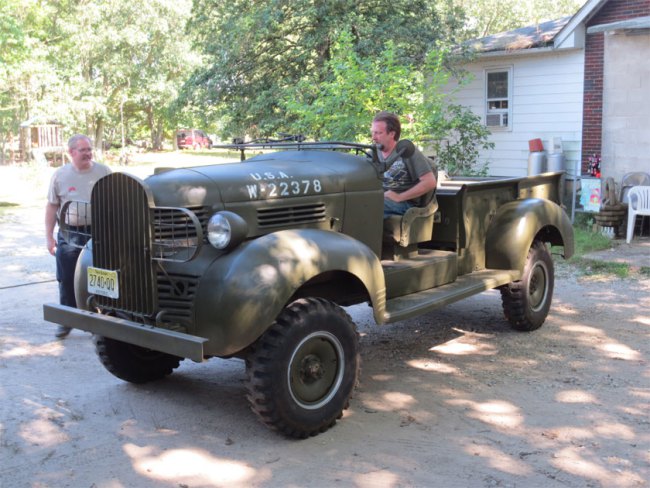


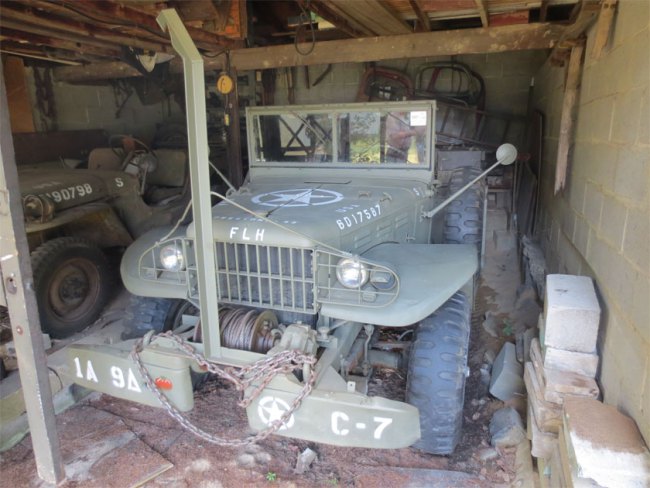



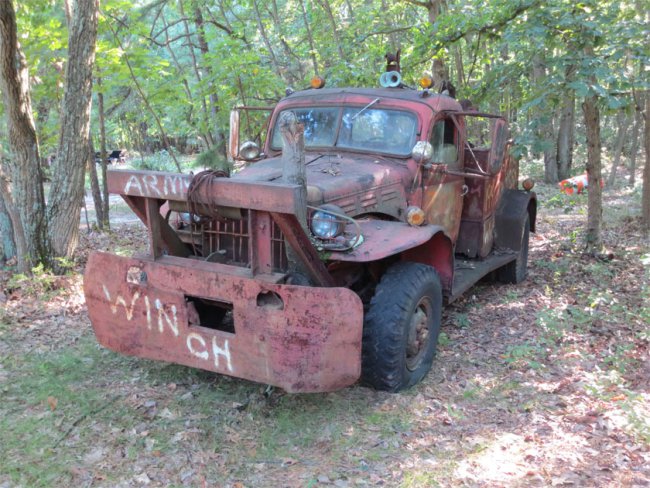








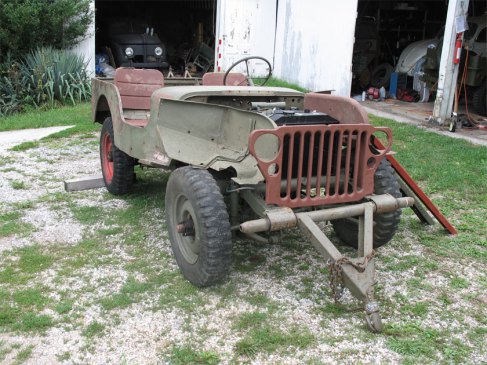


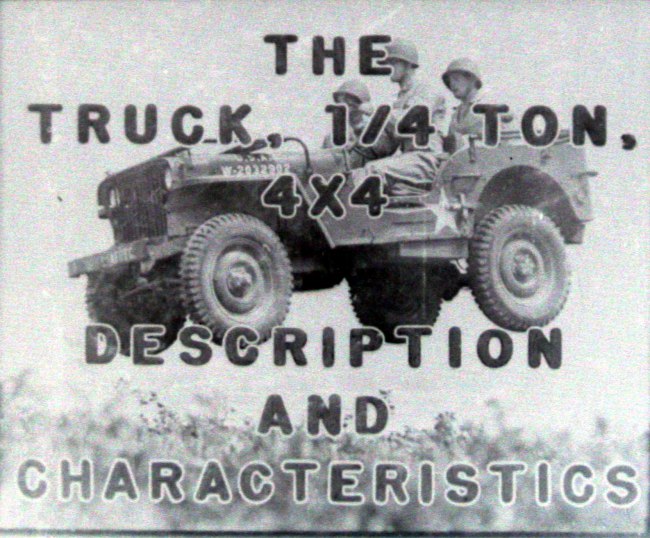



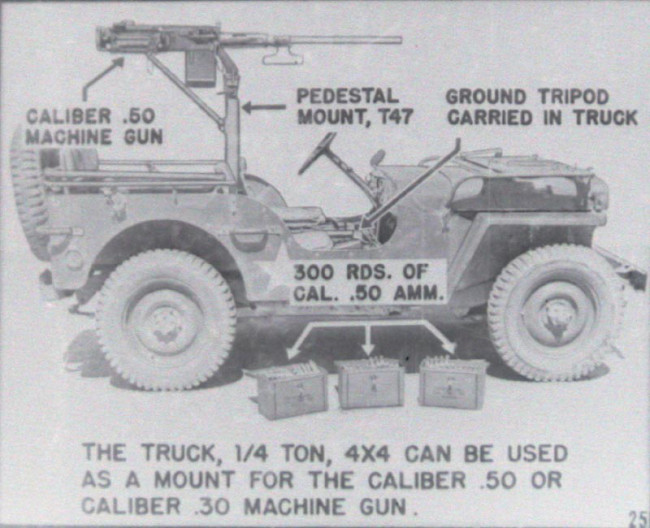


 RSS Feed
RSS Feed